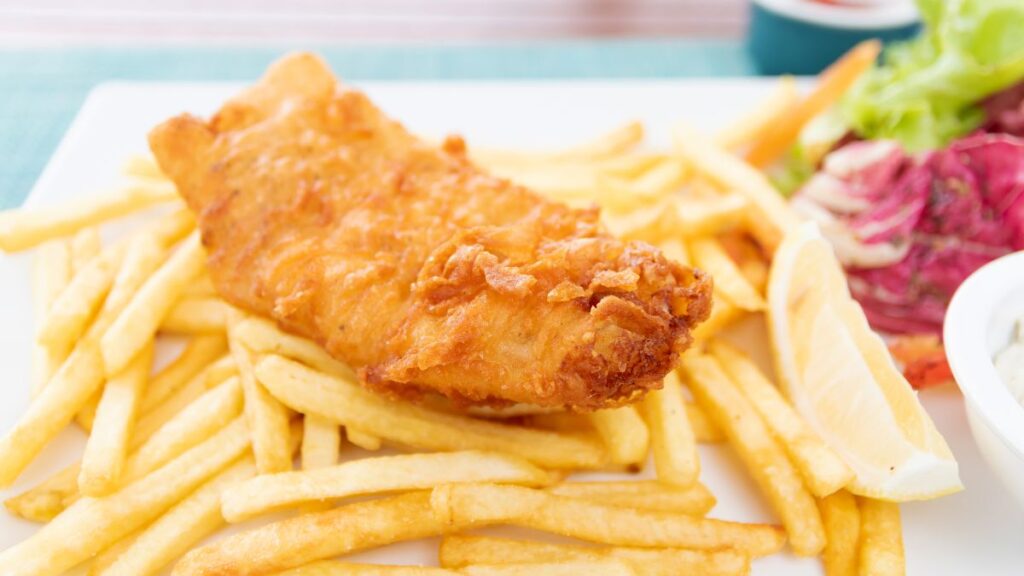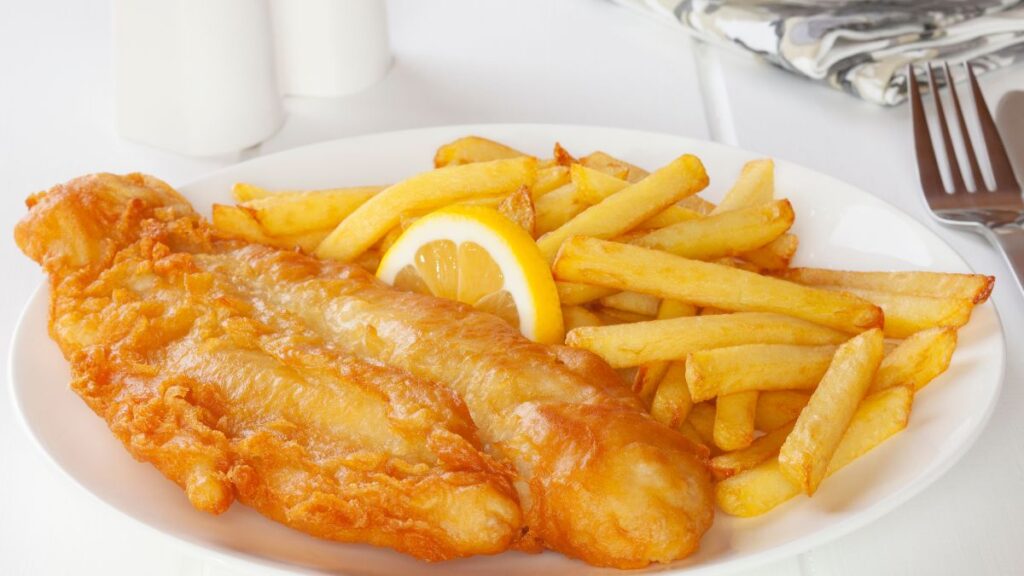introduction
Fish and chips have been a beloved dish for centuries, capturing the hearts and taste buds of people around the world. This classic combination of battered fish and crispy chips has stood the test of time and remains a staple in many cultures. In this article, we will explore the history, cultural significance, preparation methods, and modern variations of this iconic dish, as well as address some frequently asked questions.
1. The Origins of Fish and Chips
The origins of fish and chips can be traced back to the 19th century in the United Kingdom. The dish is believed to have been born from the fusion of Jewish and British culinary traditions. Fried fish was introduced to Britain by Jewish immigrants from Spain and Portugal, while chips (fried potatoes) became popular around the same time as a cheap and filling meal. The combination of these two elements resulted in the creation of fish and chips, which quickly gained popularity among the working class. (786)

2. The Cultural Significance
Fish and chips have become a symbol of British culture, representing comfort and nostalgia for many. The dish became especially popular during World War II when it was one of the few foods not rationed in the UK. This further ingrained it into the nation’s cultural identity. Today, fish and chips are enjoyed by people of all ages and backgrounds, often associated with seaside holidays and family outings.
3. The Perfect Fish: Choosing the Right Type
Selecting the right type of fish is crucial for making the perfect fish and chips. Traditionally, white fish such as cod and haddock are used due to their mild flavor and flaky texture. These fish are abundant in the North Atlantic, making them a natural choice for British fishmongers. However, other types of fish like pollock, plaice, and even halibut can also be used to create a delicious variation of the dish.
4. The Art of Battering
The batter is a key component of fish and chips, providing a crispy and flavorful coating for the fish. A traditional batter is made from a simple mixture of flour, water, and a pinch of salt. Some recipes call for the addition of beer or baking soda to enhance the batter’s lightness and crispiness. The fish is dipped into the batter just before frying, ensuring it is evenly coated.
5. Frying Techniques: Achieving the Perfect Crisp
The frying process is crucial to achieving the perfect texture for fish and chips. The fish is typically deep-fried at a high temperature, around 180°C (356°F), to ensure a crispy exterior while keeping the inside tender and juicy. The chips are usually double-fried, with an initial low-temperature fry to cook the potatoes through, followed by a second high-temperature fry to achieve a golden, crispy finish.
6. Accompaniments and Condiments
Fish and chips are often served with a variety of accompaniments and condiments to enhance the flavors. Traditional accompaniments include mushy peas, tartar sauce, and malt vinegar. Some people prefer a squeeze of lemon juice over their fish, while others enjoy a sprinkle of salt and vinegar on their chips. These additions provide a balance of flavors, complementing the richness of the fried fish and potatoes.(786)

7. Modern Variations
While traditional fish and chips remain popular, modern variations have emerged, reflecting contemporary culinary trends and dietary preferences. Health-conscious consumers can opt for baked or grilled fish as a lighter alternative, while sweet potato fries are often used as a substitute for regular chips. Additionally, gluten-free batters and plant-based fish alternatives have become available, catering to those with dietary restrictions.
8. Global Influence and Adaptations
Fish and chips have transcended borders and become a global phenomenon, with each country putting its own spin on the dish. In Australia, for instance, fish and chips are often served with tartar sauce and lemon wedges, while in New Zealand, it’s common to enjoy them with tomato sauce. In the United States, the dish is popular in coastal regions, often accompanied by coleslaw and hush puppies.
9. Sustainability and Environmental Impact
As the popularity of fish and chips continues to grow, so does the concern over the sustainability of the fishing industry. Overfishing and environmental degradation have led to declining fish stocks in many parts of the world. To combat this, consumers are encouraged to choose sustainably sourced fish, such as those certified by the Marine Stewardship Council (MSC), to ensure the long-term viability of fish populations.

10. The Role of Fish and Chips Shops
Fish and chips shops, commonly known as “chippies” in the UK, play a vital role in preserving the tradition of this iconic dish. These establishments often use family recipes passed down through generations, ensuring a taste of authenticity. The ambiance of a traditional fish and chips shop, with its newspaper-wrapped portions and friendly service, adds to the overall experience of enjoying this classic meal.
11. Celebrating National Fish and Chips Day
In the UK, National Fish and Chips Day is celebrated annually on the first Friday of June. This event brings together fish and chips lovers from all over the country to celebrate and enjoy their favorite dish. Many chippies offer special promotions and events to mark the occasion, highlighting the dish’s enduring popularity and cultural significance.
12. The Future of Fish and Chips
The future of fish and chips is likely to see continued innovation and adaptation, driven by changing consumer preferences and environmental considerations. As people become more health-conscious, the demand for healthier cooking methods and sustainable ingredients will grow. This may lead to more creative variations of the dish, ensuring that fish and chips remain a beloved favorite for generations to come.
Conclusion
Fish and chips have earned their place as a beloved dish worldwide, with a rich history and cultural significance that spans generations. From their humble beginnings in 19th-century Britain to their global adaptations, fish and chips continue to be a symbol of comfort and nostalgia. As we look to the future, the dish will undoubtedly evolve to meet the demands of modern consumers, while preserving the flavors and traditions that have made it an enduring classic.

FAQs
1. What is the best type of fish for fish and chips?
- Cod and haddock are the most popular choices due to their mild flavor and flaky texture, but other options like pollock and plaice can also be used.
2. Can fish and chips be made healthier?
- Yes, healthier versions can be made by baking or grilling the fish and using sweet potato fries or air-frying the chips.
3. What are some common accompaniments for fish and chips?
- Common accompaniments include mushy peas, tartar sauce, malt vinegar, lemon wedges, and coleslaw.
4. How can I ensure my fish batter is crispy?
- Using cold ingredients, adding baking soda or beer to the batter, and frying at the right temperature can help achieve a crispy batter.
5. What is the environmental impact of fish and chips?
- Overfishing is a concern, so choosing sustainably sourced fish is important to minimize environmental impact.
6. Are there plant-based alternatives to traditional fish and chips?
- Yes, there are plant-based fish alternatives made from ingredients like tofu and jackfruit, as well as gluten-free batters for those with dietary restrictions.
